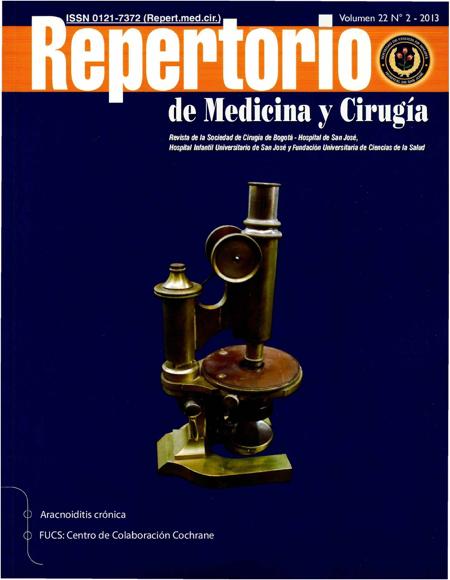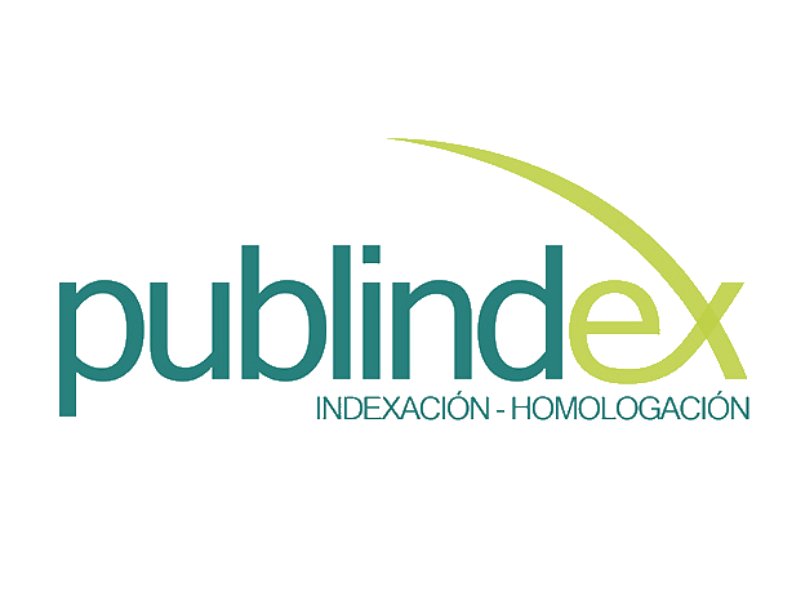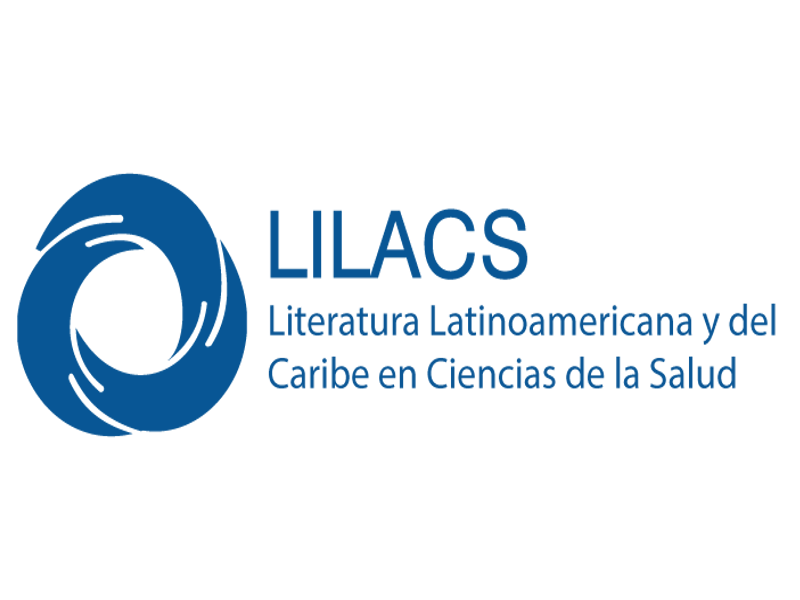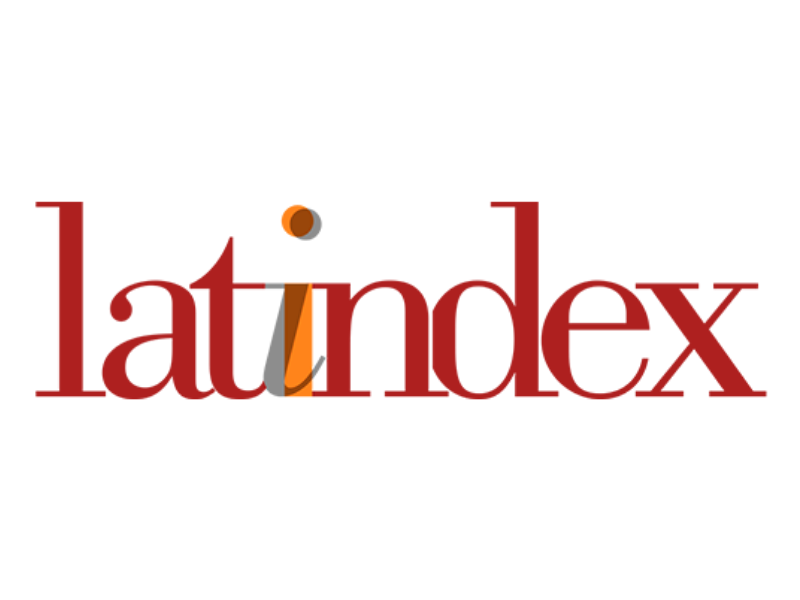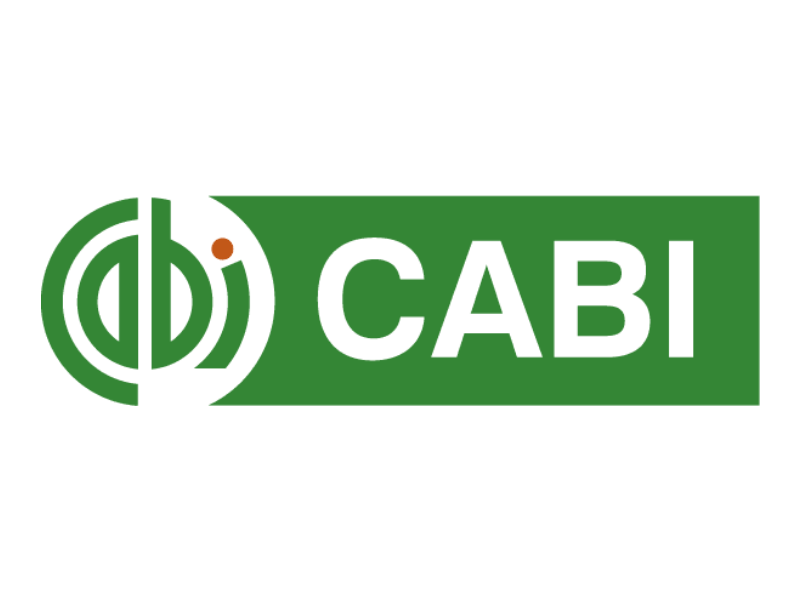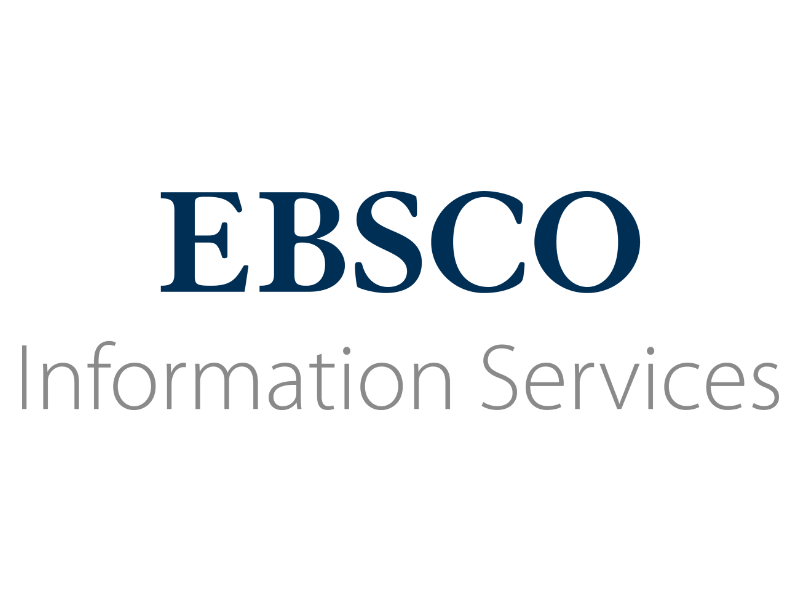Colecistectomía laparoscóp ica de urgencia experiencia en el hospital de San José, Bogotá DC
Emergency laparoscopic cholecystectomy: Hospital de San José, Bogotá DC.
Esta obra está bajo una licencia internacional Creative Commons Atribución-NoComercial-CompartirIgual 4.0.
Mostrar biografía de los autores
Introducción: las técnicas mínimamente invasivas permiten el manejo de cuadros agudos como la cole cistitis con buenos resultados en términos de morbimortalidad. Objetivo: analizar los resultados de la colecistectomía laparoscópica en casos agudos atendidos en el Hospital de San José de Bogotá DC, en el período enero 2010 a enero 2011. Materiales y métodos: serie de casos llevados a colecistectomía laparos cópica. Se revisaron variables clínicas y paraclínicas, duración del cuadro clínico, tiempo en ser llevado al acto quirúrgico, duración de la cirugía, necesidad de conversión y complicaciones. Resultados: de 267 pacientes, 173 (64.8%) fueron mujeres, la edad mediana 43 años (RIQ: 33-56). Ingresaron con cuadro clí nico de colecistitis moderada 130 (48%) y severa 2 (0.9%). La fase aguda fue el hallazgo intraoperatorio en 142 casos (53.1%). La correlación histopatológica reveló igual número de casos (126; 48%) con colecistitis aguda y crónica, y solo colecistitis crónica. En los primeros tres días 221 (82.7%) fueron llevados a cirugía. La necesidad de conversión fue de 25 (9.3%) y solo se presentó una muerte (0.3%) en el postoperatorio temprano. Conclusiones: la colecistitis aguda y el cólico biliar son las causas más frecuentes de colecistec tomía de urgencias, correspondiendo el hallazgo patológico de fase crónica a episodios de cólico biliar. La intervención quirúrgica temprana se asocia con disminución de morbimortalidad.
Visitas del artículo 546 | Visitas PDF 4509
Descargas
1. Castro F, Galindo J, Bejarano M. Complicaciones de colecistitis aguda en pacien tes operados de urgencia. Rev. colomb. cir. 2008;23(1):16-21.
2. Bejarano M. Podemos predecir la necrosis vesicular?.Rev. colomb. cir. 2003;18(4):203-10.
3. Kang JY, Ellis C, Majeed A et al. Gallstones--an increasing problem: a study of hospital admissions in England between l 989/1990 and 1999/2000. Aliment Pharmacol Ther. 2003;17(4):561-9.
4. Nathaniel J. Laparoscopic cholecystectomy. St. Louis: Mosby, l 991.
5. Strasberg SM. Cholelithiasis and acute cholecystitis. Baillieres Clin Gastroen terol. 1997 Dec;l 1(4):643-61.
6. Beckingham IJ, Krige JE. ABC of diseases of liver, pancreas, and biliary system: liver and pancreatic trauma. BMJ. 2001;322(7289):783-85
7. Elwood DR.Cholecystitis. Surg Clin North Am. 2008 Dec;88(6):1241-52
8. Ganpathi IS, Diddapur RK, Eugene H, Karim M. Acule acalculous cholecystitis: challenging the myths. HPB (Oxford). 2007;9(2):131-4.
9. Serrano Arenas M, Cadena Angarita H, Contreras Grimaldos LA, Villar Centeno LA, Reyes Serpa WA.Guias de practica clínica basadas en la evidencia: Abdo men agudo.Proyecto !SS-ASCOFAME. Bogota: ASCOFAME;1998.
10. Harvey RT, Miller WT, Jr. Acule biliary disease: initial CT and follow-up US versus initial US and follow-up CT. Radiology. 1999;213(3):831-836.
11. Hirota M, Takada T, Kawarada Y, et al. Diagnostic criteria and severity assess ment of acule cholecystitis: Tokyo guidelines. J Hepatobiliary Pancreat Surg. 2007;14( I):78-82.
12. Prados O. Historia de la colecisteectomia laparoscopia, El surgimiento de un nuevo paradigma. Revista del Hospital J M Ramos Mejia. 2004;9(3):24-29.
13. Yamashita Y, Takada T, Kawarada Y et al. Surgical treatment of patients with acule cholecystitis: Tokyo Guidelines. J Hepatobiliary Pancreat Surg. 2007;14(1):91-97.
14. Casillas RA, Yegiyants S, Collins JC. Early laparoscopic cholecystectomy is the preferred management of acute cholecystitis. Arch Surg. 2008;143(6):533-7.
15. Dominguez LC, Rivera A, dez C, Herrera W. Análisis de los factores de conver sión durante colecistectomía Iaparoscópica a abierta en una cohorte prospectiva de 703 pacientes con colecistitis aguda. Cir Esp. 201 l ;89(05):300-6.
16. Kok-Ren L SIN-CTS-HLK-H. Risk Factors for Conversion to Open Surgery in Patients With Acute Cholecystitis Undergoing lnterval Laparoscopic Cholecys tectomy. Ann Acad Med Singapore. 2007;36(1):631-635.
17. Majeed AW, Troy G, Nicholl JP et al. Randomised, prospective, single-blind comparison of laparoscopic versus small-incision cholecystectomy. Lancet. I 996;347(9007):989-994.
18. Mayal J ARÁJ. Problemas .clínicos tras lacirugía de la vesícula y de las vías biliares. Rev Gastroenterol. 2000;2:87-96.
19. Simopoulos C, Botaitis S, Polychronidis A, Tripsianis G, Karayiannakis AJ. Risk factors for conversion of laparoscopic cholecystectomy to open cholecystectomy. Surg Endose. 2005;19(7):905-9.
20. Teckchandani N, Garg PK, Hadke NS et al. Predictive factors for successful early laparoscopic cholecystectomy in acule cholecystitis: a prospective study. lnt J Surg. 2010;8(8):623-7.
21. Del Pin CA, Arthur KS, Honig C, Silverrnan EM. Laparoscopic cholecystec tomy: relationship of pathology and operative time. JSLS. 2002;6(2):149-154.
22. Papi C. Timing of cholecystectomy for acule cholecystitis: a meta-analysis. Am J Gastroenterol. 2004;99(1):156-157.
23. Siddiqui T, MacDonald A, Chong PS, Jenkins JT. Early versus delayed laparo scopic cholecystectomy for acule cholecystitis: a meta-analysis of randomized clinical trials. Am J Surg. 2008 Jan;l 95(1):40-7.
24. Borzellino G, Sauerland S, Minicozzi AM, Verlato G, Di Pietrantonj C, de Man zoni G, et al. Laparoscopic cholecystectomy for severe acute cholecystitis. A meta-analysis of results. Surg Endose. 2008 Jan;22(1):8-15.
25. Nikfarjam M, Niumsawatt V, Sethu A et al. Outcomes of contemporary man agement of gangrenous and non-gangrenous acute cholecystitis. HPB (Oxford). 2011;13(8):551-558.
26. Trowbridge RL, Rutkowski NK, Shojania KG. Does this patient have acute cho lecystitis?. Jama. 2003;289(1):80-6.
27. Urbach DR, Stukel TA. Rate of elective cholecystectomy and the incidence of severe gallstone disease. CMAJ. 2005 Apr l 2;172(8):1015-9
28. Chang CW, Chang WH, Lin CC, Chu CH, Wang TE, Shih SC. Acule transient hepatocellular injury in cholelithiasis and cholecystitis without evidence of cho ledocholithiasis. World J Gastroenterol. 2009;15(30):3788-92.
29. Bortoff GA, Chen MYM, Ott DJ, Wolfman NT, Routh WD. Gallbladder Stones: lmaging and InterventionJ. Radiographics. 2000;20(3):751-66.
30. Carrasco M. ¿Hay factores clínicos y/o bioquímicos con los que se pueda presu mir diagnóstico preoperatorio de perforación de vesícula biliar?.Cir Gen. 33[1], 25-31.
31. McSherry CK, Glenn F. The incidence and causes of death following surgery for nonmalignant biliary tract disease. Ann Surg. l980;191(3):271-75.
32. Raad S.Al-Saffar. Conversion rate in laparoscopic cholecystectomy: areview of 300 Cases. Karbala J.Med. 2010; 3(1): 772-8.
33. Roslin J. Vesícula biliar y sistema biliar extrahepático. En: Principios de cirugía. 6a ed. Madrid: lnteramericana - McGraw-Hill; 2011:1409-41.
34. Garber SM, Korrnan J, Cosgrove JM, Cohen JR. Early laparoscopic cholecystec tomy for acute cholecystitis. Surg Endose. 1997 Apr;l 1(4):347-50.
35. Litwin DEM, Cahan MA. Laparoscopic Cholecystectomy. Surgical Clinics of North America. 2008;88(6):1295-313.
36. Yetkin G, Uludag M, Oba S, Citgez B, Paksoy l. Laparoscopic cholecystectomy in elderly patients. JSLS. 2009;13(4):587-591.
37. Bueno Lled J., Planells Roig M, Amau Bertomeu C, et al. Outpatient Iaparo scopic cholecystectomy: A new gold standard for cholecystectomy?.Rev Esp. Enferrn Dig. 2006;98:14-24.
38. Hashizume M, Sugimachi K, MacFadyen BY. The clinical management and re sults of surgery for acute cholecystitis. Semin Laparosc Surg. l 998;5(2):69-80.
39. Bender JS, Duncan MD, Freeswick PD, Harmon JW, Magnuson TH. lncreased Iaparoscopic experience does not Iead to improved results with acule cholecysti tis. Am J Surg. 2002;184(6):591-4.
40. Bizueto-Rosas H H-PNGJ-G. Morbilidad y mortalidad en la cirugía de urgencia de la. colecistitis crónica Iitiásica agudizada. Cir Ciruj. 2002;70(I ):72-5.
41. Calero P, Ruiz J, Sanjuanbenito A et al. Colecistitis agudas: esta justificado hoy en dia diferir la cirugia?.cir Esp. 2010;88(2):92-6.
42. Chandio A, Timmons S, Majeed A, Twomey A, Aftab F. Factors influenc ing the successful completion of Iaparoscopic cholecystectomy. JSLS. 2009;13(4):581-86.
43. Lo CM, Liu CL, Lai EC, Fan ST, Wong J. Early versus delayed laparo scopic cholecystectomy for treatrnent of acute cholecystitis. Ann Surg. 1996 Jan;223(1):37-42.
44. Lee SW, Chang CS, Lee TY, Tung CF, Peng YC. The role of the Tokyo guide lines in the diagnosis of acute calculous cholecystitis. J Hepatobiliary Pancreat Sci. 2010;17(6):879-84.
45. Rodriguez-Sanjuan JC, Arruabarrena A, Sanchez-Moreno L, Gonzalez-Sanchez F, Herrera LA, Gomez-Fleitas M. Acute cholecystitis in high surgical risk pa tients: percutaneous cholecystostomy or emergency cholecystectomy?.Am J Surg. 2012 Jul;204(1):54-9.
46. Tsimoyiannis EC, Tsimogiannis KE, Pappas-Gogos G, Farantos C, Benetatos N, Mavridou P, Manataki A.Different pain seores in single transumbilical incision laparoscopic cbolecystectomy versus classic laparoscopic cholecystectomy: a randomized controlled tria!. Surg Endose. 2010;24(8):1842-48.
47. Kum CK, Eypasch E, Lefering R, Paul A, Neugebauer E, Troidl H. Laparoscopic Cholecystectomy for Acute Cholecystitis: ls It Really Safe?.World J Surg. 1996 Jan;20(1):43-8; discussion 48-9.
48. Lam CM, Yuen AW, Chik B, Wai AC, Fan ST. Variation in the use of Iaparo scopic cholecystectomy for acute cholecystitis: a population-based study. Arch Surg. 2005;140(11):1084-8.
49. Schafer M, Krahenbuhl L, Buchler MW. Predictive factors for the type of surgery in acute cholecystitis. Am J Surg. 2001;182(3):291-7.
50. Sodergren MH, Orihuela-Espina F, Mountney P, et al. Orientation strate gies in natural orífice translumenal endoscopic surgery. Ann Surg. 2011 Aug; 254(2):257-66.
